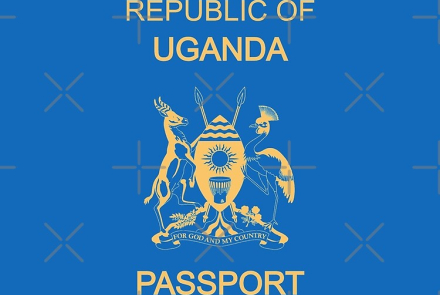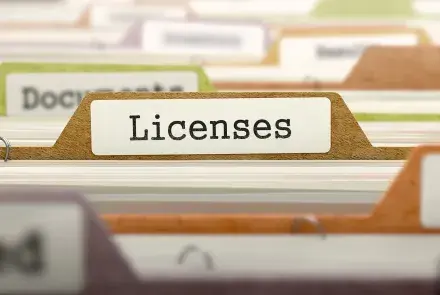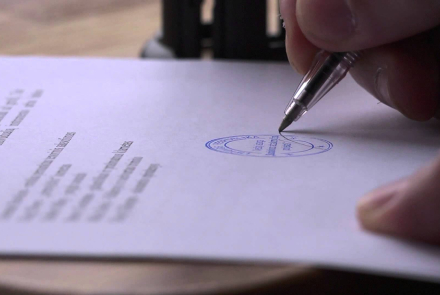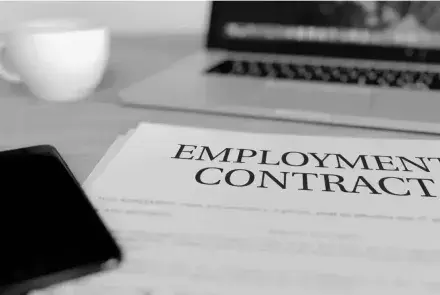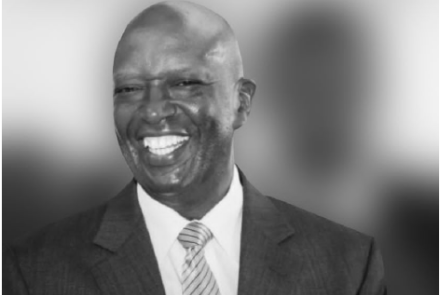“Training Rewards” in Football and FIFA’s introduction of the FIFA Clearing House
Over the years, professional football players have announced themselves to the world through their performances in the FIFA World Cup™ and as a result, have managed to attract interest from top European clubs. The FIFA World Cup Qatar 2022™ (“World Cup”) won’t be any different as a number of players have already made their mark on the beautiful game. Now that the World Cup is coming up to an end, a lot of transfer activity is expected in Europe in the 2023 January transfer window, which opens on 1 January 2023. This article thus answers some of the frequently asked questions in relation to training rewards in football.
What regulations govern the transfer of football players?
First and foremost, all clubs around the world that play organised football (football played under the auspices of FIFA, i.e. the associations and the confederations) are governed by the Fédération Internationale de Football Association (FIFA).
As world football’s governing body, FIFA is firmly committed to the principles of the rule of law, good governance and transparency. In this context, FIFA has laid down global and binding rules concerning the status of players, their eligibility to participate in organised football, and their transfer between clubs belonging to different associations. These rules are known as the FIFA Regulations on the Status and Transfer of Players (“FIFA RSTP”).
What payments are associated with football transfers?
There are various payments associated with football transfers. These include but are not limited to; transfer compensation (commonly known as ‘transfer fees’), agent fees, and training rewards. FIFA has in its statutes implored every member association to use electronic systems in the process of football transfers. One of the systems that must be used, for example, in the international transfers of players and in the distribution of training rewards, is the Transfer Matching System (TMS).
What are training rewards and how are they calculated?
Training rewards, as defined in the FIFA RSTP, are the mechanisms which compensate training clubs for their role in the training and education of young players, namely training compensation and the solidarity mechanism.
A training club is one that trains and educates young players between the ages of 12 and 23. In modern day football, most clubs affiliated to member associations have football academies where young talent is groomed – so when a young player from an academy, for example signs his first professional contract with a different/new club, the new club owes the former club of the player (the club whose academy trained the player/training club) a training compensation.
FIFA’s rationale for the payment of training rewards was to encourage the training of young players and to promote a spirit of solidarity between the elite and grassroots football.
- Training compensation
Under the FIFA RSTP, a player’s training and education takes place between the ages of 12 and 23; and training compensation is payable, as a general rule, up to the age of 23 for training incurred up to the age of 21. It is worthy of note, however, that the principles of training compensation do not apply to women’s football.
Training compensation is due when; - (i) a player is registered for the first time as a professional; or (ii) a professional is transferred between clubs of two different associations (whether during or at the end of his contract) before the end of the calendar year of his 23rd birthday.
As a general rule, to calculate the training compensation due to a player’s former club(s), it is necessary to take the costs that would have been incurred by the new club if it had trained the player itself. The FIFA RSTP thus provide a specific equation to be used when a player registers as a professional for the first time. The equation is: - the training costs of the new club multiplied by the number of years of training, in principle from the calendar year of the player’s 12th birthday to the calendar year of his 21st birthday. In the case of subsequent transfers, training compensation is calculated based on the training costs of the new club multiplied by the number of years of training with the former club.
- Solidarity mechanism
When a professional is transferred during the course of his contract, 5% of any compensation paid within the scope of a transfer, not including training compensation paid to his former club, shall be deducted from the total amount of the compensation and distributed by the new club as a solidarity contribution to the club(s) involved in the training and education over the years. In other words, whenever a club pays a transfer fee for a player, 5% of the fee is withheld to be used as a solidarity contribution.
Solidarity payments do not stop at a player’s 23rd birthday (like the training compensation payments do) but rather continue through the course of a player’s professional career each time he is transferred while under contract. Further, solidarity payments are distributed to all clubs that trained the player between his 12th and 23rd birthdays at a proportional rate depending on how long the player was at each club.
When may entitlements to training rewards be triggered and what body processes payments related to such rewards?
Whenever there is a transfer compensation involved in a football transfer, an entitlement to a training reward may be triggered.
FIFA has laid down a ‘3 step process’ of distributing training rewards, namely: - (a) identification of entitlement to training rewards, (b) creation of an electronic player passport (EPP) and (3) transfer of payments between clubs through the FCH entity. Here below is a summary of what each step entails:
- Identification of entitlement to training rewards
Under the FIFA Clearing House Regulations (“FIFA CHR”), there are three instances which place a club in a position to be considered for a training reward whenever a transfer compensation is involved, and the instances are: - (1) when a player is registered with an association for the first time as a professional, and the association, enters that registration in its electronic domestic transfer system (the said system has to be integrated with the FIFA Connect ID service and FIFA Connect Interface) or exceptionally declares it manually in TMS; (2) where there has been a national transfer (a player is registered with a new club within the same member association) and the same is entered in the association’s electronic domestic transfer system, or is exceptionally declared manually by the member association in TMS; and (3) when there has been an international transfer (the movement of the registration of a player from one association to another association) within the scope of eleven-a-side football, and the clubs involved, enter that transfer in TMS as provided in Annexe 3 to the FIFA RSTP. If done correctly, the said three instances keep FIFA in the know as to the history of players thus simplifying FIFA’s work of identifying entitlements to training rewards whenever transfers are ongoing or have been concluded.
- Creation of an electronic player passport
An EPP, as defined in the FIFA RTSP, is an electronic document containing consolidated registration information of a player throughout their career, including the relevant member association, their status (amateur or professional), the type of registration (permanent or loan), and the club(s) (including training category) with which they have been registered since the calendar year of their 12th birthday.
Once an entitlement to a training reward is identified, a provisional EPP for the relevant player will be generated by TMS. The provisional EPP will then be available for inspection in TMS by all member associations and clubs for ten (10) days after generation. The ‘10 days period’ is what is termed as the inspection period in Article 8 of the FIFA CHR.
During the inspection period, if a member association that is not listed in the provisional EPP believes that one or more of its affiliated clubs should be included in the final EPP, it may request to be included in the EPP review process. Similarly, if a club is faced with the same problem, i.e. it’s not listed in the provisional EPP and believes that it should be included in the final EPP, the club may request its member association to be included in the EPP review process and to provide pertinent registration information. The member association must then, pursuant to Article 8 para. 3(b) of the FIFA CHR, act in good faith when responding to such a request from a club.
Upon completion of the inspection period, the FIFA general secretariat will assess the provisional EPP for accuracy and relevancy. After the assessment, the FIFA general secretariat will open an EPP review process in TMS to which the parties listed under Article 9 para. 1 of the FIFA CHR, will participate. One of the parties listed in the said provision are the member associations that provided registration information relating to the player through the FIFA Connect Interface. The EPP review process lasts ten days though its duration can exceptionally be extended by the FIFA general secretariat.
After completion of the EPP review process, and after the FIFA general secretariat has evaluated any request(s) to amend registration information, the FIFA general secretariat will, in the absence of situations of legal or factual complexity, decide on the registration information to be incorporated and amended in the final EPP. An Allocation Statement will then be automatically generated by TMS based on the final EPP and it will among others show the amount(s) to be distributed to training clubs. Lastly, all parties that were involved in the EPP review process will be notified of the final EPP and Allocation Statement, by the FIFA general secretariat.
As stated in FIFA’s Circular no. 1679 of 1 July 2019, the requirement of an electronic player registration system and the creation of an EPP, will not only increase transparency and professionalism, but most importantly, it will form the basis for a more efficient and coherent distribution of training rewards to the clubs entitled to such compensation.
- Transfer of payments between clubs through the FCH entity
According to FIFA’s Circular no. 1817 of 8 November 2022, FIFA established the FIFA Clearing House (FCH) in Paris on 23 September 2022; and on 22 October 2022, the FIFA Council approved the FIFA CHR. Under those regulations, the FCH was established, inter alia, to process payments related to the transfer of football players between clubs, and to protect the integrity of the football transfer system. The FCH accordingly commenced its operations on 16th November 2022.
Article 12 paragraphs 1 and 2 of the FIFA CHR provide that every Allocation Statement will be sent by TMS to the FCH immediately after it is generated, and relevant information on clubs and member associations in TMS (including banking details) will also be sent to the FCH for payment processing.
But before any payment is received by the FCH from a new club or paid by the FCH to a training club(s), the FCH will assess all parties involved to ensure that they comply with national and international laws on anti-money laundering, anti-bribery and corruption, etc. The said assessment is referred to as a ‘compliance assessment’ under Article 15 of the FIFA CHR. Notably, any determination of the FCH in relation to a Compliance Assessment is final and binding and shall not be subject to any appeal.
Once the parties involved pass a Compliance Assessment, the FCH will issue a Payment Notification to the new club detailing the total amount due. Article 13 para. 1 of the FIFA CHR instructs the FCH to send the said notification via email or registered post to the address of the new club; and such notification shall be considered valid to establish time limits.
Upon receipt of the payment notification, the new club is expected to pay the requested amount in full within thirty (30) days to the FCH. The FCH only accepts payment of training rewards through a bank transfer from a bank account in the name of the club. If a new club fails to pay the requested amount in full by the specified deadline, Article 13 para. 4 of the FIFA CHR instructs the FCH to charge an administrative levy of 2.5% of the requested amount payable to each training club instead of interest for late payment, and to give the new club a further seven (7) days to pay the requested amount in full. Should a new club fail to pay the requested amount in full by the further deadline of 7 days given by the FCH, it shall be subject to disciplinary proceedings before the FIFA Disciplinary Committee in accordance with the FIFA Disciplinary Code.
Once payment is received in full from the new club, the FCH will generate a Distribution Statement based on the final and binding EPP and Allocation Statement, and send it via email to each training club. The FCH will then make payment into the bank account (registered in the name of the training club) provided by each training club.
Conclusion
Article 4 para. 7 of the FIFA CHR restricts payment of training rewards to only clubs whose players are registered by a member association and identified with a FIFA ID through electronic systems namely, the FIFA Connect ID Service, the FIFA Connect Interface and TMS.
Therefore, every member association should implement the player registration process described in the FIFA RSTP and the FIFA CHR so that training clubs can benefit from the footballing concept of training rewards.



